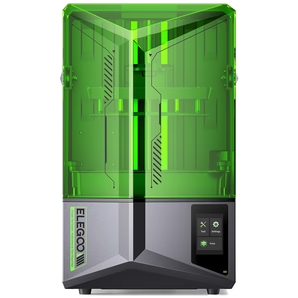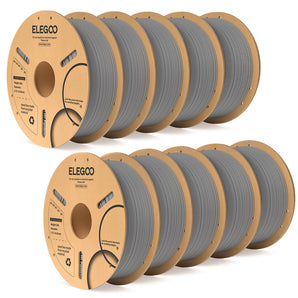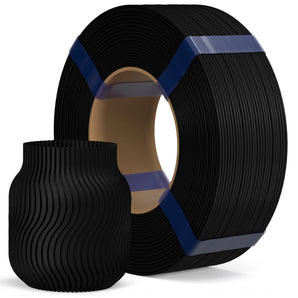Understanding 3D Printing Fumes
3D printing, a marvel of modern technology, brings with it a cloud of concerns—literally.
This article delves into the unseen aspect of 3D printing: the fumes.
It explores the potential health hazards associated with 3D resin printer fumes and provides insights into maintaining air quality and ensuring safety while using 3D printers.
Whether you are a 3D printing enthusiast or a professional, understanding the implications of 3D printing fumes on human health is essential to navigate the 3D printing world responsibly and safely.
Article Outline
- Why are 3D Printer Fumes a Concern?
- What are the Health Risks of Inhaling 3D Printer Fumes?
- How do Different Filaments Affect Air Quality?
- Are Enclosures Effective in Containing 3D Printer Fumes?
- How to Maintain Good Air Quality While 3D Printing?
- Is There a Difference in Fume Emission Between Resin and FDM 3D Printing?
- Can Long-term Exposure to 3D Printer Fumes Cause Chronic Health Issues?
- How to Clean Your 3D Printer to Reduce Fume Emission?
- What Safety Measures Should be Taken While Using 3D Printers?
- Are There Any Regulations Regarding 3D Printing Fumes and Air Quality?
Why are 3D Printer Fumes a Concern?
3D resin printer fumes have become a significant concern due to the increasing popularity of 3D printing. These fumes, emitted during the 3D printing process, contain volatile organic compounds (VOCs) and ultrafine particles that can be harmful to human health.
The concern arises from the fact that prolonged exposure to these fumes may lead to respiratory issues and other health problems.
Understanding the nature of 3D printer fumes and implementing safety measures are crucial to mitigate the risks associated with them.
What are the Health Risks of Inhaling 3D Printer Fumes?
Inhaling 3D printer fumes poses several health risks. Studies have shown that exposure to these fumes can cause inflammation and irritate the eyes, nose, and throat.
Some VOCs found in 3D printer fumes, like styrene, are classified as carcinogens, indicating a potential risk of cancer with long-term exposure.
The health risks necessitate the implementation of safety precautions and proper ventilation to minimize exposure to harmful fumes during 3D printing.
How do Different Filaments Affect Air Quality?
Different filaments emit varying levels of fumes, affecting air quality differently. ABS (Acrylonitrile Butadiene Styrene) filament is known to emit more harmful fumes compared to PLA (Polylactic Acid) filament, which is considered more user-friendly and environmentally friendly.
Nylon and polycarbonate filaments also release significant amounts of VOCs. It is essential to be aware of the type of filament being used and to ensure proper ventilation and filtration to maintain good air quality during the 3D printing process.
The Elegoo Air Purifiers that we most recommend are the Mars Mate, which with large size and long filter lifespan, and the Mini Air Purifier, which can be widely applied to all Elegoo resin 3d printers
Are Enclosures Effective in Containing 3D Printer Fumes?
Using enclosures can be effective in containing 3D printer fumes.
Enclosures help in trapping the emitted fumes and prevent them from spreading into the surrounding air. However, merely using an enclosure is not sufficient.
It is crucial to have a proper filtration system within the enclosure to filter out harmful particles and VOCs and to ensure that the air quality within the enclosure is maintained.
How to Maintain Good Air Quality While 3D Printing?
?
Maintaining good air quality while 3D printing involves using proper ventilation, filtration systems, and safety gear. A well-ventilated space can help in dispersing the fumes, reducing the concentration of harmful particles in the air.
Using HEPA (High-Efficiency Particulate Air) filters can effectively filter out ultrafine particles and VOCs. Wearing proper safety gear, like masks and goggles, can also protect against exposure to 3D printer fumes.
Is There a Difference in Fume Emission Between Resin and FDM 3D Printing?
Yes, there is a difference in fume emission between resin and FDM (Fused Deposition Modeling) 3D printing. Resin 3D printing tends to emit more noxious and odorous fumes compared to FDM 3D printing.
The chemicals used in resin 3D printing can be more harmful, necessitating stricter safety measures and ventilation. Understanding the differences in fume emission between different 3D printing technologies is essential for ensuring safety and health while using 3D printers.
Can Long-term Exposure to 3D Printer Fumes Cause Chronic Health Issues?
Long-term exposure to 3D printer fumes can potentially lead to chronic health issues. The carcinogenic compounds found in some 3D printer fumes pose a risk of cancer with prolonged exposure.
Additionally, continuous inhalation of these fumes may lead to respiratory problems and other health complications. It is crucial to minimize exposure to 3D printer fumes and to adopt safety measures to protect against potential long-term health effects.
How to Clean Your 3D Printer to Reduce Fume Emission?
Regularly cleaning your 3D printer can help in reducing fume emissions. Removing accumulated dust and residues from the printer parts can prevent the release of additional particles during printing.
Using appropriate cleaning agents and ensuring that the printer is well-maintained can contribute to a reduction in fume emission and help in maintaining a safer 3D printing environment.
What Safety Measures Should be Taken While Using 3D Printers?
While using 3D printers, it is essential to implement safety measures such as using enclosures with proper filtration systems, ensuring good ventilation, wearing safety gear, and regularly cleaning the 3D printer.
Being aware of the potential health hazards posed by 3D printer fumes and taking proactive steps can help in creating a safer and healthier 3D printing experience.
Are There Any Regulations Regarding 3D Printing Fumes and Air Quality?
Currently, there are limited regulations specifically addressing 3D printing fumes and air quality. However, general occupational safety and health standards apply, and organizations are encouraged to adhere to best practices to ensure the safety and well-being of individuals using 3D printers.
The development of more comprehensive regulations and guidelines is crucial to address the growing concerns related to 3D printing fumes and air quality.
In Summary:
- 3D printer fumes are a significant concern due to the potential health hazards associated with exposure to these fumes.
- Different filaments affect air quality differently, with some emitting more harmful fumes than others.
- Using enclosures with proper filtration systems and ensuring good ventilation are essential for maintaining air quality and minimizing exposure to 3D printer fumes.
- Long-term exposure to 3D printer fumes can lead to chronic health issues, necessitating the implementation of safety measures and awareness of the risks involved.
- Regular cleaning of 3D printers and adherence to safety protocols can help in creating a safer 3D printing environment.
- The development of regulations and guidelines specific to 3D printing fumes and air quality is crucial to address the growing concerns in this area.
Still Need More Info Relating to 3D Printer Fumes?
Check Out Some Common Questions We Recieve:
Are 3D Printing Fumes Toxic?
» Show Me The Replies
Here are some answers:
- Yes, 3D printing fumes can be toxic
- The toxicity of 3D printing fumes depends on the materials being used
- Some materials used in 3D printing, such as ABS and nylon, release toxic chemicals when heated
- The level of toxicity can vary based on the temperature and duration of 3D printing
How To Filter 3D Printer Fumes
» Show Me The Replies
Here are some answers:
- Use an enclosed or ventilated workspace
- Install an activated carbon filter
- Choose low emission materials
- Implement proper ventilation
Do 3D Printers Emit Fumes?
» Show Me The Replies
Here are some answers:
- Yes, 3D printers can emit fumes
- The type and amount of fumes can vary depending on the material being used
- Fumes from 3D printers can potentially be harmful if inhaled
- Proper ventilation is important to minimize fume exposure
Does 3D Printing Smell?
» Show Me The Replies
Here are some answers:
- Yes, they can do...
- Depends on the material being used
- The odor can vary in intensity
- Some materials may have a strong smell while others may be odorless
3D Printing PLA Toxic Fumes...Serious?
» Show Me The Replies
Here are some answers:
- PLA is the most common and safest type of 3D printing filament
- PLA does not emit toxic fumes when properly used and ventilated
- Higher temperatures can cause PLA to release harmful fumes
- PLA fumes can cause irritation to the eyes, throat, and lungs
3D Printer Fumes Extractors
» Show Me The Replies
Here are some answers:
- Removes harmful fumes from 3D printer
- Improves air quality in workspace
- Can protect users from inhaling toxic chemicals
- Reduces risk of health issues related to fume exposure
3D Printer Fumes Filter
» Show Me The Replies
Here are some answers:
- Cleans harmful fumes from 3D printing process
- Uses activated carbon to absorb fumes
- Improves air quality in print space
- Reduces health risks for users
3D Printing Smell
» Show Me The Replies
Here are some answers:
- 3D printing does not produce a specific smell
- Some materials used in 3D printing may have a faint odor
- Certain printers may emit a burnt plastic smell when in use
- Proper ventilation can help reduce any potential strong scents
3D Printing Smoke Alarm
» Show Me The Replies
Here are some answers:
- Uses specialized 3D printed sensors
- Detects smoke particles in the air
- Alerts to potential fires
- Easy to install and portable
3D Printing Vapour Polishing
» Show Me The Replies
Here are some answers:
- Process used to smooth and polish the surface of 3D printed objects
- Involves applying a vaporized solvent onto the printed object
- Results in a glossy and smooth finish
- Helps remove layer lines and imperfections from the print
3D Printing Smoke Pipe
» Show Me The Replies
Here are some answers:
- Cost-effective manufacturing method
- Allows for customization and unique designs
- Durable and strong material options
- Potentially better air flow and filtration capabilities





























































































































































